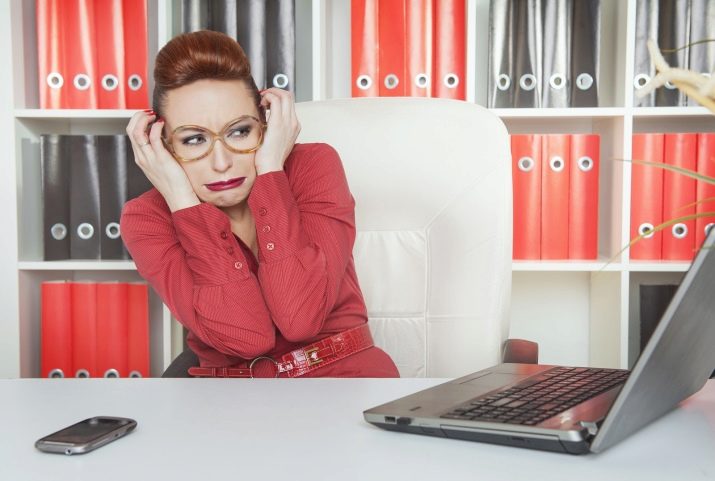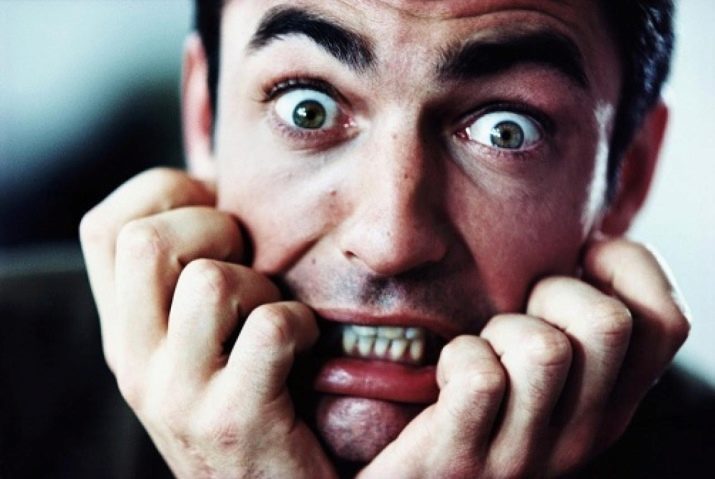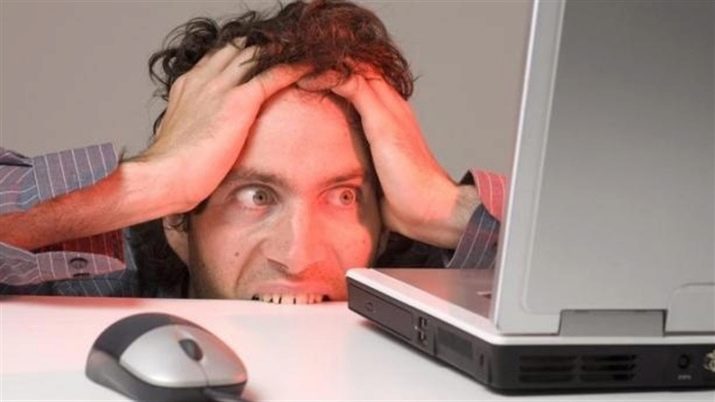Many of us are afraid of the dark, air travel or confined spaces. There are countless diverse phobias, because each of us is individual, like our fears. In this article, you will learn about the most amazing and unusual phobias diagnosed in people.

Top unusual gadgets related phobias
Recently in the world there are more and more phobias associated with modern technology. There is an explanation for this: with the development of technology, our world has changed very quickly, and most people are scared of any changes, because they are associated with instability and surprise. There are seven of the most common fears generated by gadgets.
- Nomophobia is a fear of losing a mobile phone. Have you ever forgotten your smartphone when you leave home at least for a while? If you experienced significant discomfort from this situation, close to panic anxiety and a sense of security, then you may have nomophobia. This name comes from the English "no mobile phone". The term was first introduced by researchers back in 2008, when it became clear from experimental data that more than 50% of subjects felt tangible fear when they were left unconnected. Now the spread of this disease is only progressing.
Test yourself: try turning off your smartphone for a day and see if you are comfortable.

- Cyberophobia is a fear of computers. This is a completely natural phenomenon, since computers surround us everywhere now, and artificial intelligence is actively developing. Many people wonder what will happen if all the power of electronic technology turns against a person.In extreme cases, this phobia even has physical symptoms: patients at the sight of computers experience nausea and dizziness. This fear really prevents many people from living, because in the modern world it is extremely difficult to protect yourself from computers. However, psychologists successfully help patients solve this problem.
As a prevention of cyberophobia, it is recommended to work with a computer for several hours a day.

- Socionetophobia is the fear of social networks. Indeed, in the era of the development of communication on the network, many are afraid to open accounts and upload personal data there - a photo, real name and surname, and more. Fear is associated with the prejudice that accounts can be monitored or manipulated. Some, for example, do not want family and friends to see them on a dating site. Others are afraid to post on their page personal photos with their families so that their bosses do not see them at work. Psychologists also successfully solve this problem.
For fear to disappear, you need to make a social network comfortable for a person. For example, provide communication in communities with similar interests.

- Trollophobia is another unusual modern disease. Trolls are people who leave negative comments in order to get certain emotions and answers from the interlocutor, intentionally harm his personal reputation or his project. Unfortunately, there are really a lot of trolls among users of modern social networks, and not everyone can ignore their provocations with dignity. Most often, the disease occurs in vulnerable people, dependent on the opinions of others, as well as in overly suspicious and incredulous people. They strive for anonymity, are afraid to attract attention in the virtual space, and refrain from public comments.
Psychologists advise to maintain common sense: it is important not to succumb to the provocation of trolls, but to completely deprive yourself of participation in virtual discussions because of them is not worth it.

- Emojiphobia is another extraordinary fear that has emerged with the growing popularity of emoticons on the Internet. Those suffering from emojiphobia are afraid to put any character inappropriately and fear that the interlocutor will understand them incorrectly, based on the emoticon. To some extent, many have this phobia: now the vast majority of users use positive emoticons in any context, fearing that a simple sentence with a dot will be read aggressively. Most often, this phobia does not last long, but appears periodically and very selectively. This is due to the fact that on the network we correspond with work colleagues, and with superiors, and with relatives, and with friends.
You have to constantly change your speech depending on the interlocutor, and not everyone can quickly cope with this.

- Selfphobia is a fear of getting a bad selfie. Despite the fact that fear sounds quite comical and strange, psychologists say that this is a real disease that is difficult to treat. The psychological problem is more characteristic of young girls, however, sometimes it overtakes male youth and even people of age. With the development of social networks, many active users require ongoing approval from their subscribers. For the sake of good photos, sometimes they even do plastic surgery. As a prevention of this phobia, it is recommended not to spend too much time on social networks and focus not on your own photos, but directly on communication.

- Threadophobia is the fear of leaving comments on social networks or in discussions on forums. Usually such people are rather shy and closed in life. Some become more relaxed on the Internet, while others close even more and completely refrain from public communication.This is due to the fear that an unsuccessful comment will remain in the discussion thread, adversely affect the reputation of the writer, and become the object of ridicule. The thread-wreckers are very afraid of criticism, they are afraid to receive threats or insults in response to their opinion. Very often they solve the problem by creating anonymous accounts and feel much more comfortable with them.
The treatment of the disease usually should be comprehensive - it is associated with the development of self-confidence and calm communication skills both in life and in the network.

Things and horror products
In a person, very different things can cause fear. If most people react to unusual phobias with surprise, this is a real problem for patients. Consider things, objects and phenomena that provoke anxiety and fear.
- Buttons are a familiar part of our lives, but some people can be seriously scared. Such a disease is called kumpunophobia. Phobia is quite rare, but very uncomfortable for the patient, because buttons surround us everywhere.
- Vegetables for some are also the cause of uncontrolled fear. In severe patients, rapid pulse, uneven breathing, nausea, and trembling are observed. Some cannot even eat the product next to which the vegetable was lying. This phenomenon is called lacanophobia.
- Psychologists called the fear of rain ombrophobia. Often it is formed from early childhood: when we fear a thunderstorm and do not leave our home or when our parents forbid walking in the rain so as not to catch a cold. Also, this natural phenomenon for many is associated with sadness and loneliness: if a person is currently in an unstable emotional state, it is rain that can cause an exacerbation of depression. The reasons for the fear of rain in each patient are different, so the treatment also varies greatly.
- Fear of small holes is one of the most famous strange phobias. It is not as rare as it may seem. Patients experience fear and aversion to leaky objects - these can be all kinds of sponges, exotic flowers, or honeycombs. Fear manifests itself on an unconscious level and does not have obvious reasons or explanations. A similar disease is called tripophobia.
- Horophobia is a fear of dancing. Usually shy people or individuals who are in poor athletic shape suffer from this phobia: they themselves do not like to dance and will never do it in public. However, the phobia spreads more widely: patients avoid any situations related to dancing, whether it be a ballet or a disco in a club. Sometimes a phobia can be associated with childhood injuries - usually it shows a person’s self-doubt.


List of people causing fear
Sometimes horror in people is inspired not by inanimate things, but by people. Moreover, it can be both social groups and very specific individuals. Such phobias are rare, however, are a real problem in treatment, because the causes of their occurrence are very variable.
Some adults are diagnosed with fear of adolescents. This is called epibephobia.
Most often, this fear manifests itself in parents who do not know how to behave with their own child in his transitional age and cannot find contact with an adult son or daughter. Also, the crowds of teens are often avoided by older people: the cultural gap between them is too large, the elderly do not understand slang, the lifestyle and clothing style inherent in young people, therefore adolescents are often afraid.

There is papaphobia - this is the fear of the Pope. Fear is extremely rare and is often the result of trauma. This phobia is associated with a fear of religious rites, priests and any attributes of a particular religious culture.
In many adults, circus performers cause subconscious rejection.

Colerophobia is a fear of clowns. Phobia seems unusual, but has recently become more widespread. It is connected with the fact that the clown’s face is brightly painted like a mask, which does not allow him to understand his true emotions and intentions: this uncertainty gives rise to distrust and a sense of danger. Sometimes the fear of clowns occurs in children.

Other weirdest and dumbest phobias
There are so many strange phobias that we don’t even think about. Some fears may seem very stupid from the outside, but in other situations we recognize ourselves. Consider the other most amazing and unusual modern phobias.
- An interesting phenomenon is haptophobia - this is a fear of touching other people. Patients experience severe stress while in crowded places, in crowds or in public transport. Sometimes even friendly touches of acquaintances in the company cause panic: comfortable for haptophobes will be contacts only with very close people whom they can fully trust. Sometimes emotional discomfort is even accompanied by physical pain. The fear of touching men or women is also highlighted - this is often associated with injuries.
- Fear of decision making is another absurd phenomenon called decidophobia. Many of us long for freedom and the opportunity to control our lives as much as possible, however, those suffering from this phobia seek by all means to evade responsibility. In part, this may be due to the type of personality: insecure and timid people are more likely to suffer from this disease. Sometimes a phobia occurs after the tragic events in life that followed the adoption of a certain decision.
- Caliginephobia is another extremely unusual disease consisting in fear of beautiful women. Most often this is typical for men: it can be inexperienced adolescents, once rejected by adult men or representatives of non-traditional orientation. Such men feel insecure in communication and in every possible way avoid interaction with effective representatives of the fair sex. Sometimes the disease also occurs in women, because they see a rival in the object of their phobia.
- Ablutophobia is the fear of swimming and taking a shower. In its extreme states it can be very unpleasant, up to physical discomfort. The causes of this phobia in different people vary: some feel too vulnerable in the bathroom and are afraid of attack, while others are afraid of water because of the risk of choking and drowning.
- There is an irrational fear of suffering any kind of phobia - this is phobophobia. This is a difficult phenomenon to understand, but obsessive thoughts about the danger of becoming a victim of a particular phobia significantly spoil the lives of patients. Psychologists solve this problem depending on individual reasons.
About 26 strange phobias, see below.










